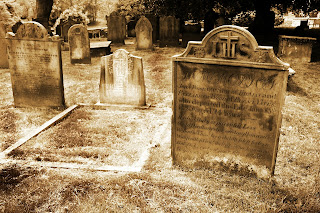Certificates
Does the oldest member of your clan have a stash of family papers? Maybe you’ve inherited ownership of the documents and photos that your mother carefully collected. Whichever it is, there are very probably death certificates in amongst them.
These are the official designation of someone’s demise, although they are notoriously the least accurate kind of certificate, given that the person they refer to isn’t around to correct any errors on them. Sometimes the relative who registered a death was distressed, misinterpreted what was being asked of them, and didn’t answer the questions correctly - hence the discrepancies with what appears in other documents. The other possibility is that they just didn’t know the maiden surname of their father’s mother, and either said so, or made one up on the spot to avoid embarrassment. Awareness of these potential mistakes, coupled with careful research, will allow you to weed out any misinformation.
Burials
A number of sources are used to record when and where someone was buried. These include church or parish records, interment registers, and graveyard inscriptions.
Faith records from Britain and other countries may be found and searched through
Local authorities or other bodies responsible for the upkeep of cemeteries should have records of burials and cremations, or at least be able to direct you to where they are kept. A quick phone call to your council office can be very useful, even to simply determine which department is in charge: parks, sanitation, public health or whatever. The website related to the council or even an individual cemetery may provide information about the layout of the grounds, as well as opening hours and contact details for cemetery staff.
Headstone inscriptions can give details not found anywhere else, although beware the slip of the stonemason’s chisel. Verify the date(s) on gravestones using other sources where possible. Again, parish clerk or GENUKI web pages can direct you; they may contain links to online indexes of specific graveyards.
Contact the family history society for the area you’re interested in to see if they have conducted any cemetery surveys, perhaps publishing their findings in booklet or website format.
And if you’ve already got books of monumental inscriptions on your shelves, why not go through them again, especially if it’s been a while since you consulted them. I’ve had lots of success with this strategy by matching names found in my recent research with printed gravestone transcriptions that I've owned for years.
Of course there are always the two major free graveyard online resources:
All of the above are not the only free resources for tracking down your family’s deceased members – in the next blog post I’ll share some further tactics to help you locate them.






